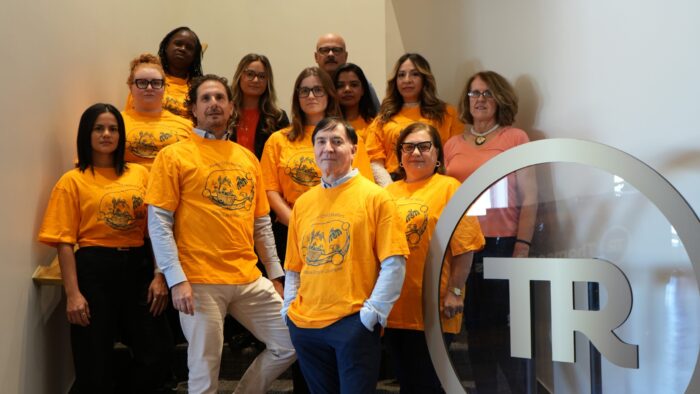Brachial Plexus Birth Injury: When Should I Talk To A Lawyer?
Author(s): Aleks Mladenovic
July 12, 2023

If your newborn child has been diagnosed with an injury to his or her brachial plexus (the bundle of nerves in the shoulder), you may be wondering whether the injury could have been prevented. Thomson Rogers can help you get the answers to this difficult question.
The brachial plexus is a complex network of nerve fibres from the spinal cord to the shoulder. The brachial plexus is essential to movement and sensation in the arm and hand. During childbirth, if too much compression, stretching or shearing force is applied to the baby’s shoulder or neck (this will happen most commonly when the doctor or midwife applies traction to pull the baby out of the birth canal), these nerves can be damaged. This can result in significant disability, including the partial or total inability to use the affected arm or hand. This disability can be permanent, depending on the extent of the nerve damage.
What are the risk factors of brachial plexus birth injury?
Fortunately, the incidence of brachial plexus birth injuries is relatively low, occurring in only about 1 to 3 out of every 1000 births. Certain factors may increase the risk that your baby will sustain a brachial plexus injury during childbirth. These include:
Antepartum Factors
- Maternal or gestational diabetes
- Excessive maternal weight gain
- Macrosomia (risk increases as fetal weight increases)
Intrapartum Factors
- Malposition of the baby during childbirth i.e. a breech delivery
- A baby that is too large in relation to the mother’s birth canal
- Twin or multiple pregnancy
- Use of instruments during delivery, including forceps or vacuum
- Arrest of dilatation
- Failed, protracted or arrested descent
- Long second stage
When Obstetrical Malpractice Leads to Brachial Plexus Injury
Because brachial plexus birth injuries are almost always the result of forces being applied to the baby’s shoulder/neck, it is certainly reasonable for parents to wonder whether the injury could have been prevented with better medical care by the obstetrical team members, including doctors, nurses and midwives/doulas.
Assigning blame or responsibility for a brachial plexus nerve injury can be challenging. In many cases, no one is to blame – childbirth carries inherent risks to mothers and their babies. It is the responsibility of the obstetrical team to ensure that these risks are mitigated and that proper steps are taken throughout. This includes taking steps to:
- Assess the mother regularly to determine the station and position of the baby during labour and delivery
- Ensure there is a reasonable basis to believe the baby can be safely delivered vaginally
- Monitor the baby’s heart rate and the mother’s contractions on the electronic fetal monitor (EFM)
- If the delivery is not progressing normally, the obstetrical team must be prepared to deliver the baby by c-section or by other operative means such as vacuum or forceps
- Rotate or reposition the baby as needed to allow the baby’s shoulders to clear the mother’s pelvic bones by using the McRoberts manouver or other repositioning techniques
- Never apply too much force or traction to the baby’s arm, neck or shoulder either during the McRoberts maneuver or any other manipulation
What types of Injuries can occur to a Baby’s Brachial Plexus?
The nature and extent of a brachial plexus birth injury are determined by the type of force applied and which nerves in the brachial plexus are involved. These injuries may include:
- Erb’s Palsy – this involves the upper portion of the neck, resulting in weakness to the child’s shoulder and upper arm
- Total brachial plexus injury – this involves all of the nerve roots in the brachial plexus and can lead to a complete loss of movement and sensation in the affected arm
Treatment of Brachial Plexus Birth Injuries
Depending on the nature and severity of your child’s brachial plexus injury, your child may get better on his or her own, or they may need physiotherapy; in some cases, surgery may be required. In rare cases, the injury may be permanent, and no treatment is offered.
When should I talk to a Medical Malpractice Lawyer?
When it comes to getting advice about how best to treat or manage your child’s brachial plexus injury, you should always listen to the advice of your child’s doctors and other treatment providers. But remember, although doctors and therapists are excellent at guiding care after the injury, they can’t always be relied upon to advise you whether the injury could have been prevented or whether your child’s injury was the result of medical malpractice. It is rare for doctors or other healthcare professionals to point the finger at one of their colleagues.
If you suspect that your child’s brachial plexus injury was caused by negligent medical care, you will need to speak to a lawyer who has experience with obstetrical malpractice cases. An experienced medical malpractice lawyer will review the medical records in your case and consult with qualified experts to determine if your child’s brachial plexus injury was the result of medical negligence.
Thomson Rogers’ medical malpractice lawyers have experience investigating and prosecuting brachial plexus birth injuries.
Our lawyers have extensive experience and a record of excellence inside and outside of the courtroom. For more than 85 years, Thomson Rogers (also known as TR Law) has secured countless significant monetary settlements and trial victories for clients in obstetrical malpractice cases, including cases of brachial plexus birth injury.
Thomson Rogers offers free consultations with no obligation. In most cases of brachial plexus birth injury, we will investigate your case without any up-front fees. If we are successful in settling your case or obtaining a victory at trial, Thomson Rogers’ fees will be paid out of the proceeds of the settlement or judgment.
To schedule a free consultation with our medical malpractice team to discuss your child’s brachial plexus injury, please directly contact the head of Thomson Rogers’ medical malpractice group, Aleks Mladenovic by phone or email at 416-868-3204, [email protected], or Kate Cahill at 416-868-3120, [email protected].
Share this




